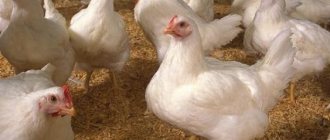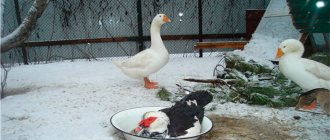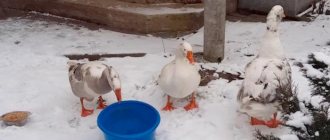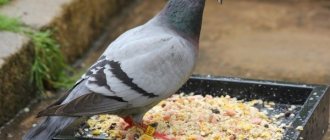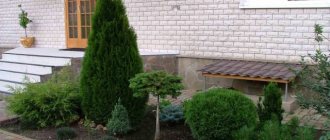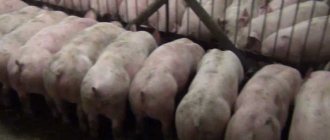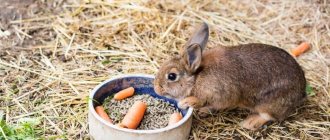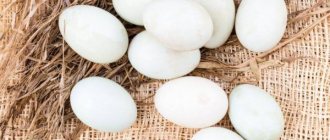Poultry farming » Ducks
0
4476
Article rating
Kira Stoletova
What to feed turkey ducks at home? This type of poultry is unpretentious and quickly gains weight with little feed. The Muscovy duck recovers on par with the Peking duck, but it eats half as much and is easier to care for. In summer, she can get her own food in ponds or in the yard. The popularity of the breed is constantly growing, as it is quiet, disease-resistant, and raising such birds for meat is very profitable.
What to feed turkey ducks at home
What can you feed
In addition to succulent herbs, cereals and vegetables, the diet of ducks should also include food of animal origin. In addition, for stable functioning of the digestive tract, formation of the skeletal system and shell formation, ducks need substances such as chalk, coarse sand and shells.
Cereal feed
The main food for Indian ducks is grains, vegetables and green grass. Grain feed is grains that should make up the majority of the diet. They are a source of carbohydrates, from which the bird obtains energy, as well as protein. By eating grain, Indian ducks grow quickly and gain body weight. They digest such food much better than chickens (80%). Muscovy ducks get vitamins, minerals and fiber from vegetables and greens, so they should always be present in their diet.
In addition to plant foods, you need to feed indo-ducks raised at home with food of animal origin: fish, meat or fish meal, kitchen waste, dairy products. These are sources of protein and fat. Birds also need minerals: for the formation of bones and the normal functioning of the digestive system. Therefore, Indian ducks require chalk, shells, coarse sand or fine gravel, which the bird must have at all times.
Of all the grain crops, yellow corn, which is the leader among grains in terms of energy value, is best suited for Indian ducks. The share of this cereal in the diet of adult musk ducks can be 50%, in the diet of young animals - 40%. After corn comes feed wheat or flour made from it (these products contain more proteins and vitamins than corn).
Indo-ducks can also be fed barley (30% of the total grain). Adults can be fed barley soaked in water or sprouted, while ducklings can be fed crushed and freed from the shells. You can also use oats, which contain a lot of fat (5%) and protein. For feeding, it is advisable to take oats of naked varieties or peeled from the shells. In small quantities (10% of the feed volume), you can feed turkey ducks crushed legumes, which contain a lot of protein (20%). You should not give more than 1/10 of the beans, since Indian ducks do not particularly like them.
Feed – waste from processing of agricultural raw materials
In addition to whole grains, the diet of musk ducks may contain waste from processing plants: bran, cakes and meal. Cake and meal obtained from oilseeds are suitable for indo-ducks. They contain a lot of fat (5-6%), as well as the minerals Ph and K, which are needed for poultry bones, and sunflower seeds also contain protein (40%). These feeds should make up 5-10% of the total amount of grain and flour mixtures. Beetroot cake, which contains more carbohydrates, can be given to ducks starting from 3 weeks of age (9% of the total feed).
You can make feeding turkey ducks more economical if you add bran to the feed. They contain up to 12% protein. The proportion of bran in the feed should not exceed 20%. Sometimes you can use vinasse, a waste product from alcohol production, in an amount of 10% in grain mixtures.
Yeast, feed, baker's or brewer's, live or dry, should be introduced into the diet in an amount of 3%. You can also add leftover bread in the form of soaked crackers to your ducks' food.
Juicy feed and root crops
In the summer, musky ducks need to add green food to their menu or simply release them into a pond or meadow. At this time, the food of adult ducks should contain aquatic vegetation in the amount of 0.5 kg; you can start giving it to 5-day-old ducklings (15 g per head).
It is recommended to chop the greens and make a mixture from it, which is added to wet mash in an amount of 20%. Ducks can be given legumes, young nettles, alfalfa, clover and other greens.
In winter, when there is no fresh grass, silage will help out, which must be prepared in advance. For this plant, for example, chop alfalfa and clover, vegetables (sugar or fodder beets, pumpkin, carrots) into pieces 0.5-0.7 mm in size, put in a container and compact. After 5 or 6 weeks the silage will be ready. You can give it to baby ducklings from 3 weeks of life, first in small portions, and then increasing the volume. When distributing it to ducks, 50 g of chalk should be added per 1 kg of product to reduce the acidity of this feed.
In addition to silage, in winter and also in summer, it is necessary to feed turkey ducks vegetables, raw or boiled. Root vegetables (carrots, beets), pumpkin, cabbage, potatoes are suitable. For winter feeding, it is better to ensile or salt carrots (add 10-15% salt to wet mash).
Cabbage can be given in plenty to both young animals and adult ducks, since this vegetable contains a lot of sulfur-containing amino acids, which are necessary for feather growth. Potatoes, like sugar beets, are best served boiled. You can start feeding it to 1.5 week old ducklings; its total share in the poultry menu can be 20-30%.
Animal feed
Of the animal feeds, the most convenient for use is fish meal (preferably low-fat). It contains more than 50% proteins, Ca, Ph and B vitamins. It should be 7% in the diet. Meat and bone meal contains less protein (from 30 to 50%). Both types of product can be mixed with other feed for ducklings as young as 5 days old. Their share in the food of small ducklings should be 5%, grown-up ones - 8% and adults - 10%.
Dairy products are mainly food for small ducklings, which can be given cottage cheese from birth. However, for example, milk should not be fed to birds - it quickly turns sour, causing ducks to develop diarrhea.
What do ducklings need?
With artificial feeding, ducklings are taught to consume food and water using their reaction to movement (young animals peck at moving food). The most convenient way is to boil the eggs, finely grate them and sprinkle them on the backs of the chicks. When moving, the food will fall, and the ducklings will begin to peck at it. Pour water into the drinking bowl and tap it with your finger, attracting the pets' attention.
Grated egg
From the second day, the chicks are already capable of eating a semi-liquid mixture, which includes a boiled egg and milk. From the third day the following is added to the diet:
- low-fat cottage cheese;
- chopped greens (in the cold season, you can replace them with green onions and spinach);
- crushed grain.
An important point is the fine consistency of all feed. On the fifth day, you can already add finely chopped waste (meat), mixing it with the food familiar to the young animals.
From day 20, boiled potatoes are introduced into the diet, which increases the volume of food; it is added in such quantities that it accounts for up to 20% of all feed. Until the age of one month, they try to keep approximately the same food that was used from the very beginning; vitamins and minerals are introduced gradually.
Feed for ducks
The approximate diet of a 60-day-old duckling consists of the following products:
- feed;
- crushed grain;
- cakes and meals;
- boiled potatoes;
- boiled meat waste;
- chopped tops from garden plants;
- chopped green mass;
- premix;
- feed chalk;
- table salt;
- mineral supplements.
Use of vitamin and mineral supplements
Chalk, shells and egg shells - sources of calcium necessary for the duck body - should also be in a certain amount in the diet of turkey ducks. They are added to wet mash. Minerals from such feed are perfectly absorbed in the bird’s body. Salt should be given only if the food is fresh and does not contain salted foods (0.2%). Gravel and coarse sand (construction sand is not suitable) should be given in the amount of 10 g per 1 duckling per week. You can also buy special vitamins for ducklings (oil solutions of vitamins A, E and D).
Features of nutrition in different seasons
In the spring, Indian ducks need more vitamins A, D and E. Concentrates or premixes, as well as carrots and fish oil, will help compensate for their deficiency. In summer, the emphasis is on green food, which the ducks obtain from grazing. They also provide wheat, oats, barley, and corn. During molting, ducks need sulfur, which they get from beans, cabbage, fish entrails and bones.
In winter, the weight of the ducks is supported by steamed lard, cabbage, beets and carrots. Grass meal, silage, and potatoes are added to grain crops.
Diet and feeding standards in summer and winter
In summer, ducks can be grazed on grass or released into ponds. You can feed them at home 2 times a day - morning and evening. If the bird is constantly in the yard, it needs to be fed 4 times: 2 times with dry food and 2 times with wet mash, which must contain greens, and care must be taken that the wet food does not turn sour.
In winter, indo-ducks need to be fed at least 3 times a day, first with a grain-flour mixture, then with wet mash and silage. At this time, the diet of musky ducks should include root vegetables, meat and bone or fish meal, and hay dust.
Diet recipes
Experienced farmers independently prepare feed mixtures for turkey ducks. Complex recipes can be replaced with ready-made complete feeds.
Complex
Daily feeding of thirty-day-old ducklings is made saturated with the following components, indicated in grams per chick:
- grain mixture – 15-50;
- wheat – 20-30;
- corn – 40-70;
- millet – 8-19;
- meat and bone meal – 5-6;
- fish oil – 0.1-1;
- fishmeal – 9-12;
- chalk, shell - 1-5;
- yeast – 4-6;
- salt – 0.5-1.
The basis of nutrition for adult ducks is wheat, barley, oats and corn, mixed in equal quantities. The following ingredients are added to cereals, also in grams per individual:
- sunflower cake - 10;
- yeast - 4;
- bone meal - 6;
- wheat bran - 20;
- shells - 9;
- salt - 0.4.
Fish, meat broth or whey is added to the mixture.
Simple
A simple way to fatten turkey ducks is to feed them with mixed feed. There are types of ready-made mixtures:
- starting - from the first week of life;
- for growth - from the eighth week;
- concentrates - grain protein mixtures.
Ready-made diets are used as the only food, as they contain all the necessary additives.
Feeding turkey ducks in the first days of life
Newborn chicks can only eat hard-boiled and finely chopped eggs, which is what they should be fed on the first day. Indo-ducklings should be fed this food 8 times a day from the first day of life. For day-old ducklings, you can prepare a mixture of the same egg and low-fat cottage cheese or corn, barley or oatmeal. In addition to food, they need to put water in which to add a few manganese crystals to make a slightly pink solution.
On the 3rd day, you can already add greens to the diet, for example, spinach or onions, beet tops. All this needs to be cut very finely. On the 4th day, you can try feeding the ducklings boiled meat waste, and the next day, remove the egg from the diet.
We recommend reading
Features of keeping Mulard ducks at home
Features of keeping Muscovy ducks at home
Characteristics and features of keeping Favorite ducks
Characteristics and features of keeping Agidel ducks
Where to keep Indian ducks
If you will breed this bird year-round, then you must immediately provide a warm barn for it. In winter, the temperature in it should not be lower than + 10 ° C, and the optimal temperature at this time of year is +14 ... + 20 ° C. Therefore, usually a barn for keeping Indian ducks is built from blocks, bricks or wood. In the latter case, you need to consider how the walls will be insulated or immediately make them from logs or timber. It is better to whitewash the walls from the inside so that there is no dampness, infection or fungus in the barn.
The optimal height of such a structure may be slightly less than 2 m. There should not be many windows - Indian ducks feel comfortable in the twilight. If you add artificial lighting to your Muscovy duck barn, keep this in mind.
The floor in the room is covered with straw. Perches for indo-ducks are like narrow benches about 15-20 cm high from the floor.
If you will breed indo-ducks year-round, then you must immediately provide a warm barn for them.
You can make a bird feeder with your own hands from boards 25 cm wide and 110 cm long. Please note that while eating, all the birds should be placed near the feeder at the same time, positioned on both sides. Birds must have water available that they can drink, but not swim when it is cold.
When keeping a 3 m² poultry house, it is optimal to house no more than 9 individuals. Provide a walk for the Indian ducks; they need it in the warm season. Here you need to place shallow containers with water in which they will bathe if the air temperature is above + 20 °C.
The fence for the walking area is made 100-150 cm high. But, since Indian ducks can take off well, their wings are still clipped. Interestingly, only the flight feathers on one wing can be trimmed for each individual. If you do this on two wings, the bird will still be able to fly.
Feeding the young
From 1 to 3 weeks, chicks can begin to be fed with mash and mixed feed. The frequency of giving food is 6 times a day. The composition of the mash is crushed grain, fresh or boiled vegetables, herbs, minerals, premixes, yeast. Mixtures can be mixed using water, yogurt, whey, fish and meat broth.
After 3 weeks, the frequency of feeding musk ducklings is reduced to 4 times a day. At this time, in addition to mash, young animals can already eat pasture and whole grain. Month-old birds should consume chalk and gravel every day. Water must be freely available.
Intensive fattening of ducks
Muscovy ducklings are raised and fed for approximately 2 months. At this time they gain weight 2.4-2.6 kg. In terms of profitability, this is the most optimal moment for slaughter. Feeding turkey ducks before slaughter has its own characteristics. It is aimed at rapid weight gain and the formation of a fat layer. This breed has a tendency to have an enlarged liver. In terms of its qualities, it is not much inferior to the goose. To gain weight faster, ducks are kept without walking during this period.
How much food do you need to spend during intensive fattening? For one month for a brood of ten ducklings you will need:
- Compound feed - 1.5 kg.
- Boiled waste with meat - 200 g.
- Boiled potatoes - 600 g.
- Grass, nettle, beet tops, alfalfa - chopped and in unlimited quantities.
- Finely crushed gravel, shells, eggshells - at least 8 g per day per head.
Be sure to add Premix or other vitamins to the menu during intensive fattening. It is important to know that at 60-65 days, Indian ducks begin to shed their feathers. At this time they begin to lose weight and are not suitable for slaughter. The new plumage fits more tightly into the skin and is difficult to pull out. This is another reason why two-month-old ducklings are sent for meat.
Feeding adult turkey ducks
Feeding turkey ducks differs depending on the purpose of the bird. The diet will be different for ducklings raised for meat and for adults from whom it is planned to obtain eggs for breeding.
Fattening poultry
Raising turkey ducks for meat at home lasts no longer than 160 days. The main food for them is the same as for other ducks, that is, grain and mash. 2 weeks before slaughter, the bird should be switched to protein foods (dairy products and legumes) so that they gain weight, and fish and flour should be excluded from it.
Some poultry farmers use special compound feed to feed musk ducks intended for meat and feed them only.
The main advantages of this breed of birds
- High level of survival and hatchability.
- Resistance to many diseases.
- Dietary meat.
- Rapid gain of muscle mass.
- Adults and small ducklings are completely unpretentious in food.
- Females lay large eggs that can be used in the human diet.
- They do not require special living conditions.
Indian eggs are very healthy and tasty
Keeping Muscovy ducks is virtually hassle-free. In winter, birds are able to live in an unheated room. The only requirement will be the presence of good flooring.
The ratio of benefits and harms of turkey meat
Indo-duck meat is rich in a complex of essential amino acids that participate in the body’s metabolic processes and increase defenses. The formation of muscle and bone tissue and recovery after intense mental or physical exertion depend on protein.
Those who want to learn in detail about the consequences of consuming the product can read the article “Benefits and harms of duck meat for the body.”
A serving of duck meat contains half the dose of nicotinic acid a person needs per day. It is also rich:
- thiamine;
- copper;
- phosphorus;
- riboflavin;
- magnesium;
- potassium;
- folic acid.
Each of the elements helps reduce stress, activate the immune system, and restore vascular elasticity.
Negative points when eating duck meat:
- the rigidity of the meat fibers - for a healthy body it is not a problem to digest turkey breast, but if you have diseases of the gastrointestinal tract, it is better to exclude duck from the menu;
- abundance of proteins - people with kidney disease or gout should avoid meat products.
Duck fat is considered medicinal and contains monounsaturated and saturated fats.
The fewest calories are in the breast, drumstick and thighs of the bird, if they are first removed from the skin.
Slaughter young animals or wait - which is better?
The timing of receiving meat may vary.
Slaughter time is at the age of 2.0-2.5 months. The advantages are easy plucking of the bird and the absence of “stumps”. They receive products for preparing dietary duck broth, although it is completely impossible to satisfy the family’s needs for meat, since the duck does not gain maximum weight.
This method is recommended for summer residents who want to quickly acquire tasty lean meat without subcutaneous fat. The technique is also in demand when it is impossible to keep young animals longer due to the cost of feed.
Slaughter of young animals in the period from 4 to 6 months. After the juvenile change of feathers, Indian ducks lose weight, continuing to eat food intensively. However, then the increase in body weight of the drakes remains about 4-6 kg. It is possible to obtain marketable meat carcasses with a thin layer of fat, suitable for preparing culinary delights. But the ducks begin to lay eggs, and the quality of their meat drops.
After young turkeys reach puberty, the taste of meat is lost; further breeding is focused on obtaining egg products. In some farms, they achieve up to 120 eggs, 75 g each, from one duck. Other waterfowl do not show such results.
About the winter keeping of an Indian duck
A well-equipped poultry house is required for winter maintenance of indo-ducks. The room is well insulated. This applies to both walls and floors with ceilings in order to avoid sudden temperature changes.
Indo-ducks come from warm countries, so they do not cope well with frost. The permissible temperature at which the bird does not freeze outside is not higher than -9°C. Indoors this figure is 12°C and above.
Additionally, the room needs good ventilation.
Indian duck weight by month: table
To determine how successful the process of raising young animals is, the poultry farmer needs to know how the ducklings gain weight. Muscovy ducks grow more slowly than other types of waterfowl, but less food is consumed during the growth process. There is a lot of greenery in the mute menu, which significantly reduces the cost of feeding and has a positive effect on the quality of the meat.
The table shows the approximate weight standards for ducklings from birth to 3 months.
| Birth weight | 15 days | 1 month | 1.5 months | 2 months | 3 months | |
| Drake white | 48–50 g | 300 g | 650–800 g | 1700 g | 2700 g | 3000–3200 g |
| White duck | 44–48 g | 250 g | 500 g | 1200–1300 g | 1700 g | 2000 g |
| Colored varieties | 42–45 g | 220–250 g | 450–550 g | 1000–1200 g | 1700–2200 g | 2800–3000 g |
These data are valid for fattening poultry using mixed feed and the addition of greens.
When kept free-range and fed with concentrates, the rate of weight gain may be lower. After the age of 3 months, Indian ducks gain little weight, but the taste of the carcass improves by 4–5 months. Culinary experts especially value meat from a 7-month-old bird as it has the richest taste.
Secrets of choosing a fresh turkey carcass
Not everyone is involved in raising musk ducks. Store-bought products do not have the delicious taste of duck meat, so it is better to buy farm products at the market.
Subtleties of choosing an Indian duck carcass.
- Stick to a medium-sized meat carcass. The large Indian duck managed to build up reserves of subcutaneous fat, which did not allow her to prepare a dietary dish. Small carcasses are too thin, so the product turns out dry after cooking.
- Choose a duck that is less than six months old. Older ones have an unpleasant smell of fat and have stiff muscles. The legs of a young bird are an intense yellow color, and the beak is soft to the touch.
- A fresh Indian duck carcass gives off a pleasant sweetish aroma. The pronounced smell of mud indicates a violation of the bird’s diet and poor sanitary conditions, which can lead to the presence of parasites in duck meat.
- Elastic skin after pressure almost immediately returns to its original state, there is no feeling of stickiness. The skin color is a uniform beige shade without damage or blemishes.
- Turkey meat should not have a dirty brown color - this indicates that the product is stale. Choose duck that has a delicate pinkish hue.
Reproduction and maintenance of the Muscovy duck breed brings profit at minimal cost. In trade, this niche remains free, so anyone can try to raise poultry on their own plot.
If you have something to share with our readers, write comments. Like and share the material on social networks - perhaps your friends will also want to start raising poultry.
Basic Rules
When feeding Indian ducks, you need to take into account that they eat little. Compared to Peking ducks, Indian ducks eat half as much.
The meat gain is identical. Common ducks, the most common ducks for Russian farmers, also eat more than their musky counterparts.
Creating a special diet is not necessary. Many farmers successfully limit themselves to conventional pasture-type food (pasted greens, a pond with insects, and other small animals).
If there is good grazing and a pond, the feeder will only be needed in the cold season. Many farmers limit themselves to pasture for turkey ducks
In winter, birds need to be fed wet mixtures with a complex recipe. The composition of the mash is arbitrary, but it must include soaked grain and herbs.
Mineral and vitamin supplements are always needed, but they are most important in winter and early spring. With the help of fertilizing, you can achieve active meat growth and increased egg production.
Additives increase egg hatchability. Birds drink a lot. During the period of laying eggs, a laying female may need half a liter of water per day.
You need to carefully monitor your drinking water supplies.
Ducklings need to be fed differently than adults. We will tell you more about feeding them below.
It is important to consider that chicks cannot eat or drink, and they need to be trained in these activities. During molting, Muscovy ducks should be fed plenty of nutrients. Sulfur is needed in the feed. It is found in beans, cabbage, and oil cake.
